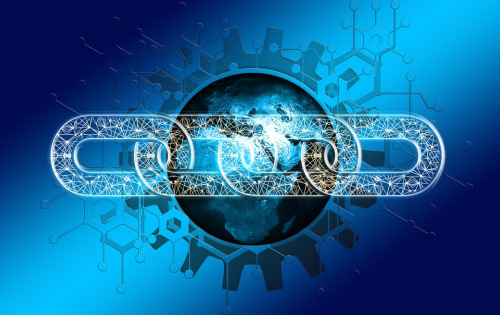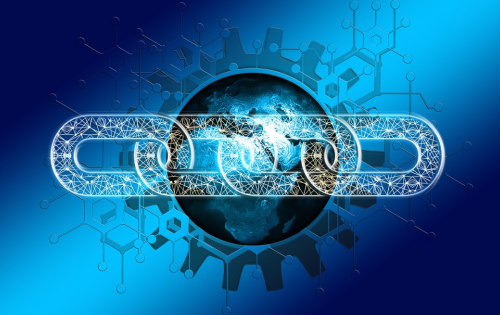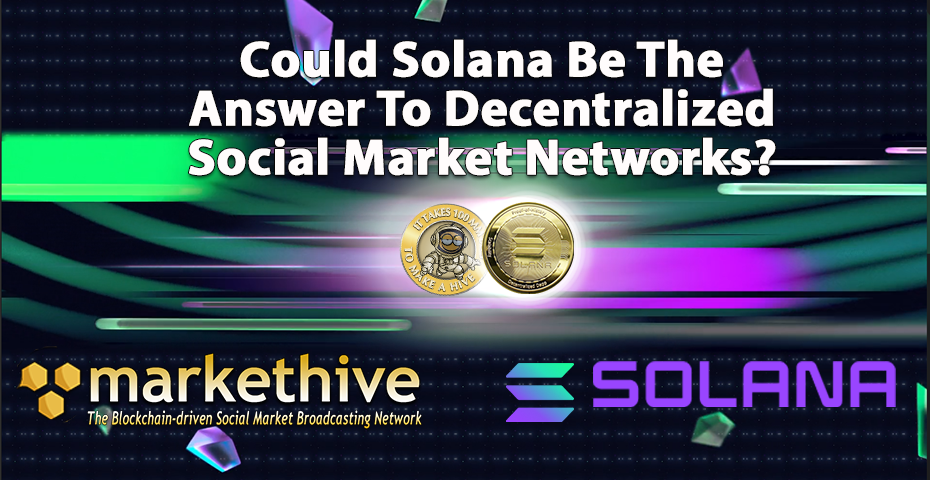


Image Source: Pixabay
Decentralizing the grid: Operators test blockchain solutions
As today’s energy market becomes decentralized, energy grid operators may need to take a Web3 approach to asset management and security.
Given today’s advancing energy market, Jesse Morris, CEO of Energy Web — a nonprofit that develops operating systems for decentralized energy grids — told Cointelegraph that grid operators around the world are moving to systems in which customer-owned assets will be used to balance energy grids. “Technology that was previously located within physical substations including monitoring equipment is now spread across the distribution network as the number of DERs increases,” said Morris. While this shift is innovative, Morris pointed out that regulated companies remain unaware of how to manage a decentralized system.
With this problem in mind, Morris explained that Energy Web recently formed a partnership with Stedin, a Dutch distribution system operator (DSO) that caters to the province of South Holland and in parts of North Holland and Friesland to use a blockchain solution for managing distributed energy assets. According to Morris, Energy Web’s solution allows for energy assets to communicate directly with Stedin’s IT systems:
“Stedin is using Energy Web’s tech stack and Web3 technologies to establish a digital relationship with customer-owned assets, along with creating a secure, asset management system for their own controlled assets. This is the first instance I’m aware of where an enterprise is using Web3 technology to manage their own physical infrastructure and assets.” Read More
DAO regulation in Australia: Issues and solutions, Part 3
Progressive DAO regulation means questioning accepted institutions: public registries, licensing, and corporate rules. Are lawmakers ready?
Lawmakers in Australia want to regulate decentralized autonomous organizations (DAOs). In this three-part series, Oleksii Konashevych discusses the risks of stifling the emerging phenomenon of DAOs and possible solutions.
Crypto anarchy is unlikely to be the future that the majority of people support. Company regulation, in its essence, has a lot of positive aspects or at least, a good intention, albeit one often embodied in a red tape that stifles business. Nevertheless, nowadays, corporation rules and regulations are formalized to the extent that they could be put in the machine code. So, the role of the government is to establish mandatory standards for those DAOs that would like to operate in the Australian market.
There are cases when a written legal text is necessary. These are situations where the legal interaction goes beyond the program’s code and requires integration with the real world. In this case, there must be formal legal documents and a liable person responsible for delivering business promises to consumers and investors. Read More
Decentralized finance: The best ways to participate and operate
Breaking down the concept of DeFi and its ecosystem, as well as strategies and the risks for private and professional investors who plan to allocate capital to decentralized space.
Decentralized finance (DeFi) is a concept that has received a lot of attention since the so-called DeFi Summer of 2020 because its usage, often measured in total value locked (TVL), has risen dramatically since that time. In the last year alone, TVL rose by over 240% to a current $209 billion in “value locked” within DeFi projects, according to DefiLlama. Not only has it become interesting for investors to get into promising DeFi projects through their tokens (hoping for capital gains), but also to use these platforms to generate a regular and steady income through various activities. And, it’s been even more attractive in bearish markets.
It is exactly this appeal of solid risk-free returns uncorrelated to crypto market movements that lures many investors out onto the thin ice. Remember: There is no such thing as a free lunch. In this article, we will break down the concept of DeFi and go deep into its ecosystem, strategies, and the risks all of which are relevant for private and professional investors considering allocating capital to this space. Read More
The future of the internet: Inside the race for Web3’s infrastructure
The Web3 infrastructure race heats up as more providers compete with each other, which indicates a healthy decentralization of the Web3 ecosystem.
People interact with open-source applications like MetaMask, Web3 games, the metaverse, and DeFi protocols every day but don’t often stop to think about what happens in the background for it all to work. If we think of Web3 as a burgeoning new city, node infrastructure providers are the underlying power grid that makes operations possible.
All DApps need to communicate with blockchains, and full nodes serve billions of requests from DApps to read and write data to chains every day. We need a huge node infrastructure to keep up with vastly expanding DApp ecosystems and serve all of the requests. However, running nodes is very time and capital intensive, so DApp builders turn to providers for remote access to nodes. There is a massive monetary incentive for infrastructure providers to power as many of these Web3 ecosystems as possible, but who is winning this race so far? Read More

Because of Solana’s POH method, it can horizontally scale the rest of the blockchain, the same way that operating systems and databases scale their software. Each Solana team member has over a decade of experience working in operating systems GPU acceleration. Compilers, networks, etc., giving them extensive and deep experience optimizing software.
Solana is based on scaling software with hardware, with the vision of building the world's largest decentralized, single chart blockchain. The only way to do that is by scaling all the core technologies with hardware.
Scaling the Blockchain in this way delivers a cheap cryptographic base for financial transfers and, more importantly, outside of finance. It is a way for Solana to build a better web experience for social media communities regarding micropayments.
Also, advertising-based revenues can be relinquished for social networks, leading communities to generate value by self-expression, creating their own content, and growing the network and the connections within the community, creating a better world for all. Read More
What Is ‘The Merge’? Ethereum’s Move to Proof of Stake
The Ethereum mainnet is due to merge with the Beacon Chain in 2022, completing the blockchain's transition from proof of work to proof of stake.
Ethereum is about to transition from a power-hungry proof-of-work system to an environmentally friendly proof-of-stake system. This switch is known as "The Merge,” and it’s coming soon. Here’s what you need to know.
Ethereum will be changing the way transactions are validated. As of this writing, Ethereum works a little like Bitcoin—transactions are mined by a decentralized network of computers, which race to solve mathematical puzzles. They’re rewarded with new ETH coins for doing so.
But this method of computers agreeing on which transactions will be added to a new block, known as proof of work, is very energy-intensive, so Ethereum will soon switch to a consensus mechanism that uses far less power and should make the network about 99% more energy-efficient.
That new system is called proof of stake. Under proof of stake, transactions are confirmed by addresses that have staked—pledged to a smart contract—lots of ETH. Those who have staked more ETH earn proportionately higher rewards. While proof of stake makes the rich richer, it doesn’t burn the world. Read More
Here’s Why BitTorrent Is Perfectly Positioned To Become A Peer-To-Peer (P2p) Market Leader
The rise of blockchain technology has resulted in more and more people quickly realizing that their personal data no longer has to remain at the mercy of traditional tech entities. Instead, thanks to the use of decentralized ledgers, it is possible for data to be shared in a manner that is not only decentralized but also safe and transparent.
In this regard, BitTorrent is a blockchain-based data-sharing ecosystem that is localized in its governance structure such that no one individual/entity has control over the platform. From a technical standpoint, while most blockchain ecosystems today suffer issues like high gas fees, poor transaction throughput capacities, high migration costs, lack of interchain interoperability, and low horizontal/vertical scalability, BitTorrent bypasses all of these issues, thanks to its future-ready infrastructure.
Numbers-wise, the platform offers extremely high network relay speeds of 7,000+ transactions per second (TPS), a figure that is extremely lofty when compared with those of rival mainstream projects such as Ethereum, Polkadot, Cardano, Avalanche, Binance Smart Chain that offer rates of 30, 1000, 250, 4500, 15 transactions per second respectively. Read More
Ripple CEO: SEC Lawsuit Over XRP 'Has Gone Exceedingly Well'
The CEO of Ripple Labs says that the lawsuit brought by the U.S. Securities and Exchange Commission (SEC) against him and his company over XRP “has gone exceedingly well.” He stressed: “This case is important, not just for Ripple, it’s important for the entire crypto industry in the United States.”
Ripple CEO Brad Garlinghouse discussed the SEC lawsuit over the sale of XRP during a fireside chat at the Paris Blockchain Week Summit Thursday.
The U.S. Securities and Exchange Commission sued Ripple, Garlinghouse, and co-founder Chris Larsen in December 2020 over the sale of XRP, which the securities watchdog said is an unregistered security offering. Ripple has disputed the SEC’s findings, insisting that XRP is not a security.
Garlinghouse shared:
The lawsuit has gone exceedingly well, and much better than I could have hoped when it began about 15 months ago. Read More
ADA To Rebound With Integration Of USDT And USDC On Cardano?
One of the best performer assets in the crypto top 10 by market cap, Cardano (ADA) keeps strengthening its ecosystem. As the network prepares for its next major Hard Fork Combinator (HFC) event, called Vasil, its DeFi sector could add some of the most popular assets in the space.
Cardano could soon have native support for Tether (USDT), and USD Coin (USDC). Charles Hoskinson, this network’s inventor, and CEO at Input Output Global (IOG), shared his enthusiasm for WingRiders.
A decentralized exchange running on Cardano, WingRiders partnered with another two projects called Flint Wallet and Milkomeda, created to provide sidechains with friendly user and developer UX, to launch these stablecoins on the mainnet. Read More
Disclaimer: These articles are provided for informational purposes only. They are not offered or intended to be used as legal, tax, investment, financial, or any other advice.